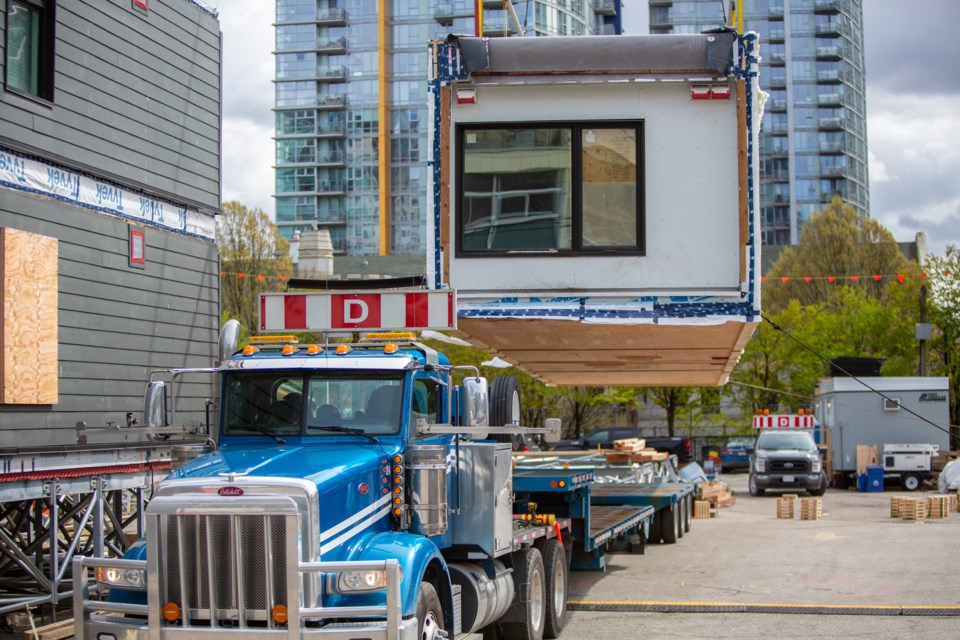Homes for people, faster. This is what the B.C. government’s Homes for People Action Plan promises. And the government has said it intends to fulfill this promise with changes to zoning requirements, permitting efficiencies, density initiatives, building more affordable housing and financial incentives. Some carrots, some sticks.
The plan largely focuses on densification and incentivizing more supply. What is noticeably absent is the streamlining of processes needed to actually create this supply.
Advocacy groups that support supply increases are all for removing red tape from the entire development and construction process. However, the conversation has typically been centred on traditional construction methods and legacy building practices. It’s time to update our thinking on how this supply can be increased.
Off-site, factory-built or modular construction methods are one such innovative approach that encounters roadblocks in the bureaucratic process because the square peg doesn’t fit the round hole. Off-site (as a term to capture all not-on-site construction) is not a new method of construction and has had varying levels of success in different areas of North America. From the creation of panels that are placed together to form a structure to more fully constructed units that come together like large LEGO blocks, off-site is a system in which most of a project’s construction is done in a centralized location and brought to the site complete.
The environmental, economic and efficiency benefits of off-site were originally quite obvious and measurable. That was, until they were put into practice. On the Canadian Prairies in the late 2000s and early 2010s, developers widely adopted this construction method in smaller communities and larger cities alike. Everything from 12-unit walk-up apartment buildings to 100-plus-unit long-term care homes were being constructed with this method.
Then bureaucracy entered the equation and removed any efficiency and economies of scale that were paired with off-site. On one site, an inspector arrived with a clipboard and checklist indicating he was required to see the components of the wall behind the drywall (such as the insulation, vapour barrier and electrical wiring). These aspects had already been inspected at the factory by a third-party inspector based on Canadian Standard Association requirements. This satisfies most provincial building codes, but the municipality had different requirements. The developer was required to remove all the freshly painted drywall just to check a box.
What’s more, there is a stigma associated with off-site construction. It’s not traditional, and the construction sector struggles with and is often resistant to change. Scenarios like the one above do not help with encouraging broader adoption.
All that said, off-site’s benefits speak for themselves. According to the Manufactured Housing Association of BC, off-site offers as much as a 43-per-cent reduction in carbon dioxide emissions waste and between 50 and 70 per cent less construction site waste. Completing the bulk of construction in an environmentally controlled factory also helps to create products that will comply with the BC Energy Step Code’s increasingly rigorous energy efficiency expectations.
There is less disruption in the neighbourhood overall because of the decreased building time. And finally, as noted in the British Columbia Real Estate Association’s economics team’s most recent market intelligence report, B.C. needs to both expand the size of its labour force and increase production efficiency to meet aggressive housing targets.
Without a doubt, labour force management for off-site construction is far less complex than that of traditional building. Having most of the construction crew in a permanent, centralized location for most of the process allows for more streamlined recruiting, improves retention and minimizes the logistical challenges that come with an itinerant model.
There are steps that need to be taken to allow the benefits of off-site to be realized, thus incentivizing its broader adoption. By bringing together planners, inspectors, developers, builders, industry associations, regulatory groups and off-site experts, the province could identify the roadblocks and remove them.
For example, Technical Safety BC requires that factory-built and manufactured homes be certified to comply with electrical safety regulations. These certifications are complex and add barriers to both the initial sale and the resale of the unit for the lifetime of the home—and they’re completely unnecessary for many larger, permanent projects. The manufactured home registry is another regulatory hurdle that does not need to impact multi-unit developments, which, once constructed, will not be moved.
It is a lot to expect three levels of government, a myriad of regulators and other stakeholders to be nimble. But to increase supply, we need to look beyond just the barriers of traditional construction methods and start creating paths that incentivize innovation.•
Trevor Koot is CEO of the BC Real Estate Association.



